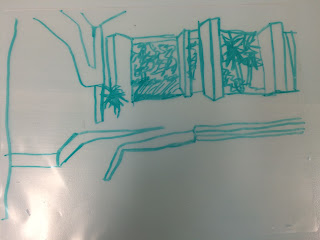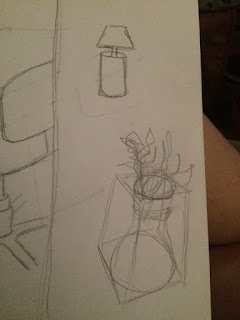End of Semester Course Reflection
This course has improved the knowledge and skills I need for an interior design career. Not only have my drawing skills improved, but I have also obtained knowledge in planning and representing a clear and understandable design. The fact that the first few weeks of the semester were centered around improving drawing skills helped immensely when it came to our final cafe presentation. I enjoyed the final cafe project the most and I appreciated seeing how much my skills and my classmates' skills improved. I thought the presentation experience was successful in that I got great advice back that I can use in future course work. This course was the first insight I've had into my interior design career (both educational and occupational). After completing this course, I feel that I am definitely in the right major and I am extremely excited to see how the rest of my educational career pans out at the University of Florida.


























































0 comments:
Post a Comment